Acm
-
- Reviewing Sapinhoá-Lula NE BSR System Marine Technology, Sep 2018 #18
The exploration and production of deepwater pre-salt plays offshore Brazil have triggered major technological challenges. Some reservoirs are located under 2,000 meters of water and have to be drilled through another 2,000 or so meters of salt. Although exploration challenges have been daunting, production challenges are no less formidable. With a number of production and injection wells placed over the large reservoirs, the difficulty of reliably and safely bringing the oil and gas to production FPSOs have been compounded by the extreme water depths involved.
In 2011 Subsea 7 was awarded a milestone subsea umbilical, riser and flowline (SURF) contract by national operator Petrobras for four decoupled riser systems to be installed in the Sapinhoá-Lula NE fields located in the Santos Basin, in the largest engineering, procurement, installation and commissioning (EPIC) SURF contract awarded to date in Brazil. The pioneering technology for connecting a large number of wells to a single FPSO was developed by the Petrobras’ research center (Cenpes) and Subsea 7, with the support of UFRJ (Federal University of Rio de Janeiro) and USP (University of São Paulo). The project required the installation of four huge 2,800ton submerged buoys approximately 250 meters below the surface. The system was designed to accommodate a combination of 45 risers/umbilicals for each field in a small area in a decoupled arrangement. Subsea 7’s scope was specifically 27 3.9km steel catenary risers of which 18 were 7.5-inch production lines, three 9.5-inch water injection lines and six 8-inch gas injection lines.
Buoy Supported Risers (BSR)
Petrobras and its partners selected the Buoy Supported Risers (BSR) system as the most effective solution for the project. Ivan Cruz, Senior Product Manager at Subsea 7, explained that in order to achieve the system’s performance and installation requirements, various innovative technologies were applied. The creation of the Angular Connection Module (ACM) proved integral to the BSR system by connecting the flexible jumpers to the pre-installed buoys. With the large number of risers installed, the buoys can take up different positions and the ACM allows connections to be made at misaligned angles of up to 15°, reliably and safely, reducing offshore hook-up time. Within the BSR system the introduction of the ACM reduced fluid flow to a single interfacing point, thereby decreasing cost and enhancing reliability by eliminating further potential leak paths.The main requirement for successful BSR mooring was to use tether adjustments to stabilize and position each buoy. The main challenge associated here was the selection of an appropriate tether material, helping to ensure that the axial stiffness was preferred in order to balance the desired tension adjustment, and to keep adjacent tethers closely together while controlling the initial slackening during fabrication and installation. Although steel air filled pipe is a commonly used material for Tension Leg Platforms (TLPs), a moderated decrease in the axial stiffness was preferred, this allowed for a simple top tension between adjacent tethers and length adjustments. A significant increase in tendon stretch, applied while the BSR was in vertical motion, would not have been an acceptable approach because of the high possibility of misalignment and damage to the system.
Another equally important technical issue which needed to be addressed was the submerged tether weight, that had the potential to minimize the impact on negative buoyancy and dimensions. Sheathed spiral strand wires (SSW) were finally chosen because the sheathed spiral strand wire has a long track record in other mooring systems and was found to meet all the requirements for 27 years of service life. The stretch is not excessive, but is enough to help minimize the effects of length measurement tolerances, being simpler to install offshore, including the locking of the lines in the connectors at the required point.
Deepwater Challenges
The development of the Sapinhoá-Lula NE reservoirs were major technological challenges. The innovative BSR concept was a unique design in the industry at the time and helped reduce the FPSO riser motions to a very minimal level. With this configuration, the movements of the floating platform are not transferred integrally to the rigid risers, reducing the damage because of the fatigue and guaranteeing their useful life even in severe meteoceanographic conditions. According to Ricardo Francis, consultant of the Management of Technology of Pipes and Risers at Cenpes, the buoys together are responsible for the production of 240,000 barrels of oil per day. “We studied a buoy system to take the dynamics of rigid lines because they internally have a coating that prevents corrosion of the steel due to the presence of gases such as H2S and CO2 and this coating has a more demanding calculation procedure, with the presence of the buoy, the useful life of these lines has increased considerably, making production feasible in the pre-salt fields. From there, flexible lines, called jumpers, are placed that connect the buoy to the production platform. In addition to bringing production to the PEUs, it is intended to absorb their dynamic movements. This is the main idea of the BSR,” he says.With the buoy holding the pipes that conduct the oil and gas from the well on the seabed to the FPSO, it relieves the load applied to the platform. Another advantage is to allow the installation of the risers even before the arrival of the production platform. “The economic advantage was the anticipation of production. If you prepare everything before you get to the production unit it simply connects the risers and you can anticipate 3 to 6 months of production,” says Ricardo. Although there were teething problems in the installation of the first BSR, which led to delays in this first installation, the operators are adamant that the system has been working smoothly and with no major problems since it started operations in 2014 and that similar systems may be used in other deepwater pre-salt plays in future.
A look at some of the Technological Challenges associated to the BSR system:
- An efficient method to install corrosion resistant alloy (CRA) mechanically lined BuBi pipe by the reeled-lay installation method;
- The development of the Angular Connection Module (ACM). This unique engineering capability greatly simplified buoy hardware by minimizing the number of connections and potential leak paths;
- A fit for purpose 400 ton tension capable riser installation tool, allowing for the reliable deployment of 27 SCRs;
- A state-of-the-art fracture mechanics engineering assessment for plastically strained pipe joints made of alloy 625 welds;
- A novel tethered tensioned mooring system, similar to that for Tension Leg Platforms (TLPs), but using spiral strand cables and chains for installation simplicity and to achieve the necessary dynamic performance;
- A tether based tensioning system capable of withstanding top angle variations associated with the buoys natural offsets and the potential length variations of the almost two kilometers long tethers;
- A bottom connector device to simplify connections to foundations. The combined result of all these innovations, some incremental and resulting from existing technologies, and others entirely new and breakthrough, gave rise to the complete BSR system, which has been vital in maintaining the production rates and low downtime for the two reservoirs.
-
- MTR 100: Falmouth Scientific, Inc. Marine Technology, Jul 2014 #25
and sea-floor boundary areas. Data can be acquired in real-time or captured and logged in internal memory. FSI offers shallow (200m) and deep (7,000m) ACM-PLUS current meters as well as options to add an integrated CTD and one or two external sensors. FSI also offers the ACM-WAVE-PLUS which gives 3D currents
-
- Middle Market Mergers and Acquisitions: A Primer Maritime Logistics Professional, Q1 2015 #10
generated by a company and excludes financial items such as taxes and deductions that can vary widely. By way of example, Braemar Shipping Services acquired ACM Shipping Group in 2014 for $87.8 million, which reflected a 12.2X multiple of the target company’s approximately $7.2 million of EBITDA over the preceding
-
- Bluefin Robotics on the Hunt for MH370 Marine Technology, May 2014 #18
of Battelle. He is responsible for the strategic direction and operational execution of the business. David is a senior member of the IEEE, a member of ACM, and a registered professional engineer in the State of Texas. David holds a B.S. in Electrical Engineering from Worcester Polytechnic Institute, an
-
- INTERNATIONAL OIL SPILL CONFERENCE Maritime Reporter, Feb 15, 1983 #14
San Antonio, Texas The eighth biennial Oil Spill Conference — sponsored jointly by the U.S. petroleum industry and the federal government — will be held February 28 - March 3, 1983, at the San Antonio Convention Center, San Antonio, Texas. More than 1,500 delegates and exhibitors from all over
-
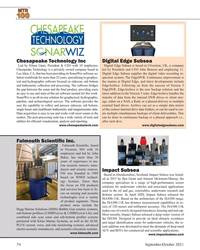 )
September 2021 - Marine Technology Reporter page: 74
)
September 2021 - Marine Technology Reporter page: 74sonar and sub-bottom pro? ler systems the ISS360. Designed to provide an ideal obstacle avoidance partnered with Klein Marine Systems, as well as the ACM- and target identi? cation sonar for underwater vehicles, the re- PLUS current, wave, and tide monitoring systems; advanced cent addition was developed
-
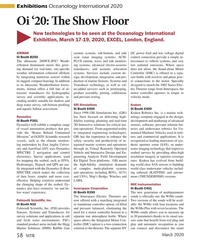 )
March 2020 - Marine Technology Reporter page: 58
)
March 2020 - Marine Technology Reporter page: 582020, EXCEL, London, England. AIRMAR seismic systems, sub-bottom, and side DC power feed and low voltage digital Oi Booth B250 scan sonar imaging systems; ACM- control connection provide a simple in- The ultrasonic 200WX-IPX7 Weath- PLUS current, wave, and tide monitor- terconnect to vehicle systems, and very
-
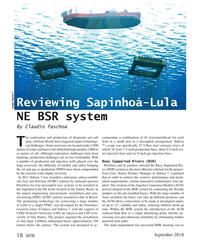 )
September 2018 - Marine Technology Reporter page: 18
)
September 2018 - Marine Technology Reporter page: 18innovative technologies were ap- Petrobras for four decoupled riser systems to be installed in plied. The creation of the Angular Connection Module (ACM) the Sapinhoá-Lula NE ? elds located in the Santos Basin, in proved integral to the BSR system by connecting the ? exible the largest engineering
-
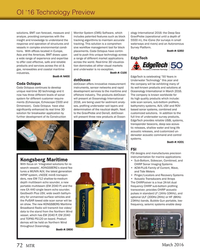 )
March 2016 - Marine Technology Reporter page: 72
)
March 2016 - Marine Technology Reporter page: 72• Sub-Bottom, Sidescan, Combined, and With focus on ‘Integrated solutions for re- CHIRP Sonar Imaging Systems search vessels’, KONGSBERG’s stand fea- • ACM-PLUS Family of Current, Wave, tures a MUNIN AUV, the latest generation and Tide Meters HiPAP system, cNODE miniS transpon- • Pinger/Locators and
-
 )
Q1 2015 - Maritime Logistics Professional page: 9
)
Q1 2015 - Maritime Logistics Professional page: 9, C Ellis, Tamara .......................24, 25, 26, 27 Louisiana Offshore Oil Platform ...............47 Rodden, Andrew ..............................36, 37 ACM Shipping Group ..............................11 El Paso Energy ......................................47 Maine Maritime Academy ....................
-
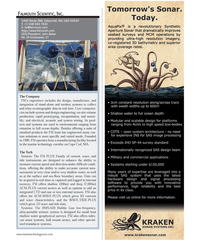 )
July 2014 - Marine Technology Reporter page: 25
)
July 2014 - Marine Technology Reporter page: 25and sea- oor boundary areas. Data can be acquired in real-time or captured and logged in internal memory. FSI offers shallow (200m) and deep (7,000m) ACM-PLUS current meters as well as options to add an integrated CTD and one or two external sensors. FSI also offers the ACM-WAVE-PLUS which gives 3D
-
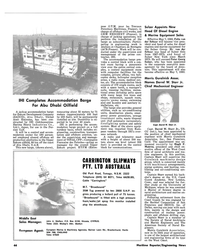 )
March 15, 1980 - Maritime Reporter and Engineering News page: 38
)
March 15, 1980 - Maritime Reporter and Engineering News page: 38, Nicosia, CYPRUS. Telex: 2331 Mickey's Attn. Skelton Euronpan Aapnt- European Marine & Machinery Agencies, Balmer Lawn Rd., Brockenhurst, Hants H «acm- S04 766, ENGLAND Telex 47509 44 ZIDELL I Maritime Reporter/Engineering News
-
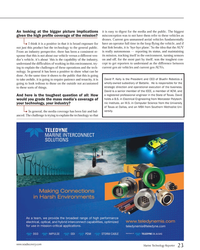 )
May 2014 - Marine Technology Reporter page: 23
)
May 2014 - Marine Technology Reporter page: 23of Battelle. He is responsible for the strategic direction and operational execution of the business. David is a senior member of the IEEE, a member of ACM, and a registered professional engineer in the State of Texas. David holds a B.S. in Electrical Engineering from Worcester Polytech- nic Institute
-
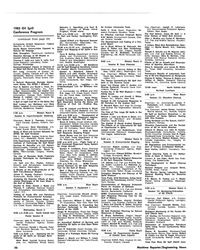 )
February 15, 1983 - Maritime Reporter and Engineering News page: 16
)
February 15, 1983 - Maritime Reporter and Engineering News page: 161983 Oil Spill Conference Program (continued from page 19) Biologische Anstalt Helgoland, Federal Republic of Germany Sandy Beach Communities Exposed to Natural Oil Seepage Dale Straughan, Paramount, California Potential Damage of Oil Wastes in Coastal Estuary Sediments Thomas F. Lytle
-
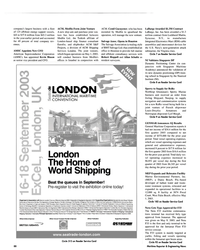 )
June 2003 - Maritime Reporter and Engineering News page: 88
)
June 2003 - Maritime Reporter and Engineering News page: 88rev- enues. AMSC Appoints New CFO American Superconductor Corporation (AMSC). has appointed Kevin Bisson as senior vice president and CFO. ACM, Medfin Form Joint Venture A new ship sale and purchase joint ven- ture has been established between Medfin Ltd., the Turkish affiliate of London-base
-
 )
June 2003 - Maritime Reporter and Engineering News page: 4
)
June 2003 - Maritime Reporter and Engineering News page: 4of companies given editorial coverage in this edition of Maritime Reporter & Engineering News. A.K. Suda, Inc. ABB ABCO Marine Group ABS ACM AHL Shipping Co. Alabama Laser All American Marine Alstom 24 30, 67 71 28, 54 88 51 76 33 67 American Detection Technologies
-
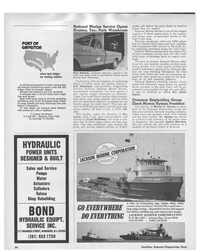 )
November 1971 - Maritime Reporter and Engineering News page: 54
)
November 1971 - Maritime Reporter and Engineering News page: 54for offshore drilling rigs and construction barges. JACKSON MARINE CORPORATION P. O. Box 1087 • Aransas Pass, Texas 78336 512/758 3295 • Cable J ACM AC 56 Maritime Reporter/Engineering News
-
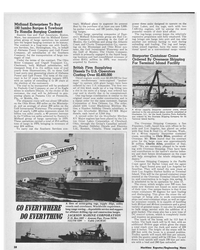 )
May 1971 - Maritime Reporter and Engineering News page: 24
)
May 1971 - Maritime Reporter and Engineering News page: 24for offshore drilling rigs and construction barges. JACKSON MARINE CORPORATION P. O. Box 1087 • Aransas Pass, Texas 78336 512/758 3295 • Cable J ACM AC 28
-
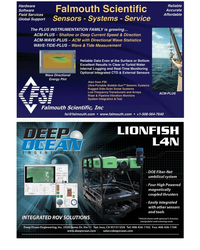 )
November 2013 - Marine Technology Reporter page: 21
)
November 2013 - Marine Technology Reporter page: 21Hardware SoftwareField Services Global Support Wave Directional Energy Plot ACM-PLUS Reliable AccurateAffordable The PLUS INSTRUMENTATION FAMILY is growing? ACM-PLUS ? Shallow or Deep Current Speed & Direction ACM-WAVE-PLUS ? ACM with Directional Wave Statistics WAVE-TIDE-PLUS ? Wave & Tide
-
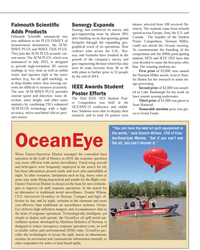 )
October 2013 - Marine Technology Reporter page: 51
)
October 2013 - Marine Technology Reporter page: 51Falmouth Scienti Þ c Adds ProductsFalmouth ScientiÞ c announced two new additions to the PLUS FAMILY of measurement instruments: the ACM- WAVE-PLUS and WAVE-TIDE-PLUS. They join the ACM-PLUS acoustic cur- rent meter. The ACM-PLUS, which was announced in July 2012, is designed to provide high-resolution
-
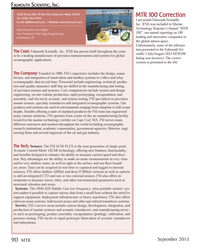 )
September 2013 - Marine Technology Reporter page: 90
)
September 2013 - Marine Technology Reporter page: 90communities, government agencies, Þ sheries, engi- neering Þ rms and several segments of the oil and gas industry. The Tech: The Tech: Sensors: The FSI ACM-PLUS is the next generation of single-point Acoustic Current Meter (ACM) technology, offering new features, functionality, and beneÞ ts designed to
-
 )
July 2013 - Marine Technology Reporter page: 35
)
July 2013 - Marine Technology Reporter page: 35high quality products and offers out- standing support. Founded in Septem- Hardware SoftwareField Services Global Support Wave Directional Energy Plot ACM-PLUS Reliable AccurateAffordable The PLUS INSTRUMENTATION FAMILY is growing? ACM-PLUS ? Shallow or Deep Current Speed & Direction ACM-WAVE-PLUS
-
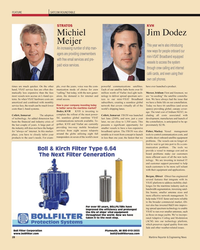 )
July 2010 - Maritime Reporter and Engineering News page: 28
)
July 2010 - Maritime Reporter and Engineering News page: 28spectrum technology to enable VSAT to run over smaller antennas, such as those on mega yachts. We’ve incorpo- rated Adaptive Coding and Modulation (ACM) into our technology platform, which preserves signal quality from rain fade and other weather-related issues. 28 Maritime Reporter & Engineering
-
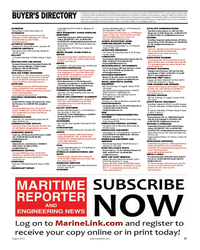 )
August 2011 - Maritime Reporter and Engineering News page: 57
)
August 2011 - Maritime Reporter and Engineering News page: 573S6L V8BC, [email protected] aesevawkc, 955 60LI,aAuror, 82 #1 Driverlye Beve07 25.,p03-236-0:63fax, 0053-236-,5653, nonne LboBt: tacnocm.coproacmocrp.oc, 0 10e Styaw ParkkeeCr N.21981 USA, erina6 48524l:e tA ,US, 431 98A-6 485:42fax, 0012-,maorge Toe Gt:tacnom [email protected] BlhcitFnh
-
 )
February 2011 - Maritime Reporter and Engineering News page: 47
)
February 2011 - Maritime Reporter and Engineering News page: 47over 900 MHz of transponder capacity on 21 communica- tions satellites. The new Evolution up- grade will bring MTN Adaptive Coding and Modulation (ACM) into their tech- nology platform, which preserves signal quality from rain fade and other weather- related issues. The upgrade also provides additional
-
 )
June 2006 - Marine Technology Reporter page: 34
)
June 2006 - Marine Technology Reporter page: 34offshore acoustic instrumentation and leading edge special engineering capabilities to address a wide array of underwater applications. The 2D ACM current meter in a 5 ton mooring cage. ESRI has developed a nautical Production Line Tool Set, called PLTS for ArcGIS-Nautical Solution, which is
-
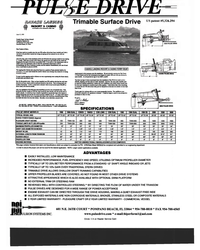 )
October 1999 - Maritime Reporter and Engineering News page: 11
)
October 1999 - Maritime Reporter and Engineering News page: 11To sure it up the ongoing outdrive Mutes wc were experiencing were costing the Resort dearly in both direct and indirect costs. flow for fee positive acm. Since we have installed your PSI outdrives fee boat has only been down for six hours which could be attributed direcdy to the drives, That is during
-
 )
December 1994 - Maritime Reporter and Engineering News page: 51
)
December 1994 - Maritime Reporter and Engineering News page: 51AND CHEM:PLEX TREATED ASBESTOS Around the world, better solutions have been sought for the problem of dealing with asbestos containing materials (ACM). Removal has been too expensive and "encapsulation", too temporary. In one of many major projects, the government of Sweden has opted for a more
-
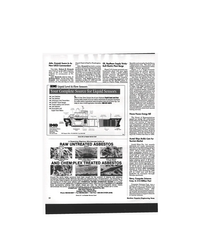 )
July 1994 - Maritime Reporter and Engineering News page: 8
)
July 1994 - Maritime Reporter and Engineering News page: 8Card AND CHEM:PLEX TREATED ASBESTOS Around the world, better solutions have been sought for the problem of dealing with asbestos containing materials (ACM). Removal has been too expensive and "encapsulation", too temporary. In one of many major projects, the government of Sweden has opted for a more
